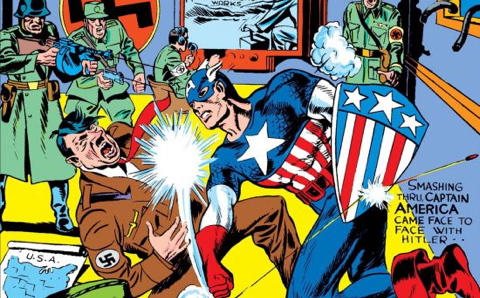 At this year’s convention, PulpFest 2018 will honor the 100th anniversary of the armistice that ended the First World War. Our programming will focus on the so-called “war pulps” of the early twentieth century and the depiction of war in popular culture.
At this year’s convention, PulpFest 2018 will honor the 100th anniversary of the armistice that ended the First World War. Our programming will focus on the so-called “war pulps” of the early twentieth century and the depiction of war in popular culture.
Although the pulps played a very important role in the evolution of American popular culture, they had essentially disappeared by the early fifties. While some continued in the smaller digest format, the rough paper magazines were killed by competition from paperback books, radio, television, movies, and comic books.
Just as the pulps had hesitated to revisit the battlefields of World War I, the comics medium at first shied away from the theme. Once again, it was Dell Publishing that tried its hand at the war genre. It launched WAR COMICS in 1940. The book ran for just eight issues.
The fight against the Axis powers and the Japanese attack on Pearl Harbor led more publishers to the war genre. With comic book superheroes such as Captain America and Daredevil slugging it out with the Führer and Hirohito, publishers launched four-color comics with military themes. AIR FIGHTERS COMICS, BOY COMMANDOS, DEVIL DOG COMICS, MILITARY COMICS, RANGERS COMICS, WAR HEROES, WINGS COMICS, and others were soon battling for newsstand space. The Korean War created a similar uptick as Atlas, Avon, Charlton, DC, Dell, Fawcett, Quality, St. John, and others entered the fray during the 1950s. The best of all was EC Comics. Although it published only a trio of titles, ACES HIGH, FRONTLINE COMBAT, and TWO-FISTED TALES towered above the competition.
Join PulpFest 2018 on Thursday, July 26, at 10 PM as Michelle Nolan explores the depiction of war in the four-color format at the DoubleTree by Hilton Hotel Pittsburgh – Cranberry. Using images selected by her friend Bob Carter, Michelle will discuss the many costumed and military heroes who battled fascism during World War II. She’ll examine the “true” type of comics, the humor books such as DEVIL DOG DUGAN and SGT. BILKO, and how war comics exploded during the Korean War. She’ll compare and contrast DC and Marvel — the leading publishers of war comics during the 1950s, talk about the explosion of Charlton war comics in the 1960s, and dissect the artistic success of Harvey Kurtzman’s war titles for EC.
You’ll get all of this, plus a ten-dollar discount off the daily admission at Confluence, Pittsburgh’s long-running science fiction, fantasy and horror conference if you choose to attend both conventions. You can join PulpFest by clicking the Register for 2018 button on our home page. And while you’re at our site, you can book a room at the DoubleTree. They’re going fast!
(Although tales of war have been with us since ancient times, the comic book industry only began to explore the war genre during the early years of World War II. Hence, four-color stories of the Great War were few and far between. Some of the best appeared in EC Comics’ ACES HIGH. Launched in 1955 and lasting five issues, the book featured the work of Jack Davis, Bernard Krigstein, Wally Wood, and air war pulp enthusiast George Evans. The latter drew all of the covers — including the September/October 1955 issue — and the lead stories of each issue of the comic.
A mainstream journalist for more than fifty years, Michelle Nolan has also covered the history of genre fiction in pulps, comics, books and films in more than 1,000 magazine, newspaper and book articles. She is the author of the definitive “LOVE ON THE RACKS: A HISTORY OF AMERICAN ROMANCE COMICS and BALL TALES: A STUDY OF BASEBALL, BASKETBALL AND FOOTBALL FICTION OF THE 1930s THROUGH 1960s. In 2014, Michelle received an Inkpot Award from Comic-Con International: San Diego for her contributions to the worlds of comics, science fiction and fantasy, film, television, and animation.)







